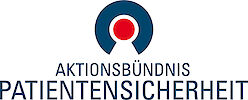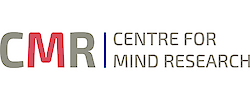Psychoses
Syndrome
All mental illnesses represent extreme or persistent manifestations of general-human experiences. Thus, extreme situations (for example in case of hunger or poisoning, isolation or threat) can lead to the loss of orientation to reality in the form of illusions ("hallucinations", e.g. hearing voices) or in the form of incorrect ideas ("delusion", such as paranoia).
In the case of psychosis, such strange and scare experiences also occur without an external occasion. Hallucinations can then occur spontaneously; Delusions are held on to although this is not comprehensible to others.
Famous people suffering from psychosis were the Nobel laureate John Nash, the writer August Strindberg and Friedrich Hölderlin and the composer Hugo Wolf.
Disease formation
As with all mental illnesses, personal disposition and personal experiences play together in the emergence of psychosis. People react differently in the same situation. Some people are particularly anxious and allege others of evil intentions. Others also refer to random events. Such people are at risk of developing a psychosis (vulnerability). Due to the development of the disorder, the majority of psychotic disturbances occur in early adulthood for the first time, but they sometimes occur for the first time (especially in women) even in advanced age.
However, vulnerability alone does not lead to disease formation – at least not necessarily.
Additional persistent stress and critical life events usually occur as well. These cannot be overcome with the available possibilities ("vulnerability stress hypothesis").
Changes in living conditions such as the beginning of a vocational training or a study, a move, the beginning of a new stage of life are situations in which psychosis can manifest themselves acutely.
In young patients, regular cannabis use or regular use of other drugs is often found in the run-up to psychosis.
In recent years, knowledge has prevailed that psychotic disturbances do not come "overnight", but rather gradually arise. A first climax and the beginning of treatment is usually preceded by a extending pre-stage, which is characterized among other things by the following symptoms:
- Pronounced social withdrawal compared to earlier
- Pronounced impairment of role performance in occupation, training or household
- Magical Thinking
- Perceptual disturbances without organic cause
- Chasing Thoughts
During the identification of pre-stages of psychotic disorders, working groups of our clinic have already pioneered the concept of ' basic disorders ' three decades ago, which were recognized and confirmed by the recent research.
If the disease is not detected and treated early (see below, early detection and early intervention section), an acute phase with the following core symptoms may occur: hallucinations, delusional beliefs, confused thinking.
This acute phase often requires a stationary psychiatric treatment. It was found that the further course of the disease is all the more unfavourable and the more a chronification to the result, the later the first efficient treatment is started. This results in the need for early treatment, preferably in the form of a prevention of the first acute episode.
The subsequent remission phase is very different from patient to patient. Even if the symptoms of the acute phase have decreased, other symptoms (drive disturbances, memory and concentration deficiencies) often persist longer. Multimodal programs can be useful here, which include, for example, regular concentration training.
Causes
According to today's understanding, psychosis are based on neurobiological disorders of the brain induced by prenatal and perinatal damage or also by genetic factors. These disturbances lead to subtle changes in neural architecture, on the one hand to functional changes in Neurotransmittersystemen. In the prodromal phase, which often lasts several years, the dopamine receptors is likely to be sensitized, leading to social and cognitive impairments and lower stress tolerance.
Treatment
Psychotic disorders are treatable. Modern neuroleptics lead to a decrease in the most painful symptoms.
A key to acceptance and better handling of the disease is the psychoeducation, in which important information about disease formation, treatment and chronicles is conveyed by experienced psychotherapists and physicians.
With the help of cognitive behavioral therapy, patients can learn to deal differently with the strange experiences that can occur in the context of a psychosis.
Also for young adults with an elevated risk of developing a psychosis and with disturbing symptoms there is a treatment offer, with the aim of preventing an acute episode and a stationary treatment. In the center for advice and treatment at elevated risk of psychoses (ZeBB) in our clinic, a diagnosis of the individual risk of disease is performed. In the course of a therapy study (PREVENT) it is examined which treatment form is optimal in the early phase of the disease.















